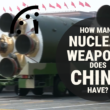How an emphasis on drones harms missile controls
By Sitki Egeli, August 1, 2016
In Round One, Masako Ikegami explained that export controls, if strict and rigid, can impede cooperation and trade in civilian technology—and undermine the economic interests of suppliers and recipients alike. A related problem is the manipulation of export controls that technologically advanced states sometimes carry out to maintain their technological and strategic advantages. Such behavior casts a shadow over the effectiveness and legitimacy of export controls.
One arena in which manipulation occurs is drone technology: Export controls originally devised to stop the spread of WMD-capable missiles now curb international transactions involving drones. The primary state conducting and promoting such practices is the United States. Washington's European allies, along with Israel, follow suit—apparently due to pressure from the United States.
This story begins in the early 1990s when the Missile Technology Control Regime, which until then had concerned itself only with ballistic missiles, began to cover drones (and cruise missiles as well). In those days, larger drones such as the US Predator were making their debut. Some observers were concerned that high-performance drones could be used to deliver weapons of mass destruction. So controls were placed on drones capable of delivering a 500-kilogram payload a distance of 300 kilometers—the same threshold that defines nuclear-capable ballistic missiles.
In the years since, the military uses of drones have become widespread. Drones are now crucial surveillance assets. Drones armed with conventional, high-explosive bombs and rockets have begun appearing on modern battlefields. Interest in drones has therefore soared around the world—but only a limited number of states have had the know-how, the mastery of sub-systems, and the operational experience to manufacture and deploy reliable, high-performance drones (and later, weaponized drones). This monopolistic control has created anomalies in the implementation of export controls. Namely, controls originally intended to stop the spread of WMD-capable ballistic missiles have been used to stop the spread of non-WMD drone technology capable merely of carrying high-explosive munitions. Throughout this process, nations involved in technology denial have pointed toward the regime as justification for their actions.
The paradox is that Predator- or Reaper-class drones are less suited for WMD delivery than are ballistic or cruise missiles. In fact, where ability to deliver weapons of mass destruction is concerned, drones are comparable to manned combat aircraft—except that manned aircraft are significantly more capable and efficient. Yet export controls do not link manned aircraft to weapons of mass destruction. So why should such strict scrutiny and control be exerted over unmanned aircraft?
The anomaly becomes even more pronounced when one examines drones' sub-systems—laser designators, for example, which are used to guide laser-homing munitions to their targets. If you are building manned aircraft, it's relatively easy to purchase electro-optic sensors fitted with laser designators. But if the intended platform is a drone, the same laser designators are off limits. This is true even for drones that cannot carry weapons, and drones whose ranges and payloads fall below regime thresholds. What this means, in effect, is that manned aircraft are allowed to fire and guide lethal munitions but drones are not. Unarmed manned aircraft, even very light craft, can illuminate targets using onboard laser designators, thus enabling munitions fired from other platforms to strike targets—but armed or unarmed drones are prohibited from doing the same. This represents a gross deviation from regime objectives.
Efforts to stop the spread of missiles are only undermined when the regime is misused to control technology intended for drones that are not capable of, or not suitable for, delivering weapons of mass destruction. Controls over drones provide an excellent example of the negative impact that rigid, blanket, or outdated restrictions can have on export controls and their effectiveness. Above all, the drone example highlights the detrimental effects of bringing nations' ulterior agendas into missile-related export controls—whose primary purpose, after all, is to curb the spread of WMD-capable missiles.
Topics: Nuclear Weapons, Technology and Security
Share: [addthis tool="addthis_inline_share_toolbox"]














